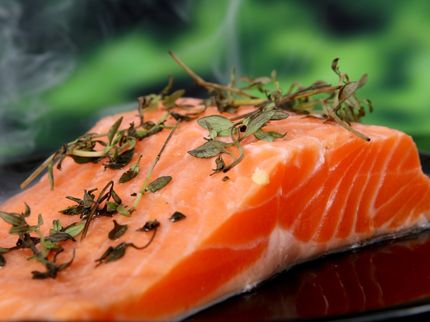Between healthy and poisonous - plant ingredients under close scrutiny
4th BfR Consumer Protection Forum discusses strategies for the health assessment of plant substances in food and feed
Advertisement
A diet with a high proportion of foods of plant origin is considered to be healthy and is advocated by many nutritionists. However, some plants that are processed into foods also contain problematic substances that may be harmful. One well-known example is coumarin, a substance which is found in some types of cinnamon. At high doses coumarin can damage the liver and foods may only contain a limited amount of it. But sufficient data are not always available to do a risk assessment on a scientific basis. One of the main topics at the 4th BfR consumer protection Forum was how to assess the risks arising from substances of this kind. The Forum was held at BfR on 5 and 6 July 2007 and was attended by various interest groups. "We must start by identifying the plant substances which may be potentially harmful because of their chemical structure. Furthermore, we must determine the levels of these substances to which consumers are exposed", said the President of the Federal Institute for Risk Assessment, Professor Dr. Dr. Andreas Hensel. "The effect of these plant ingredients in the organism should be elucidated with the help of modern molecular-biological methods". BfR recommends giving priority to the assessment of substances which are used in isolated or concentrated form in flavourings or in food supplements.
Isoflavones are one typical example of plant ingredients of this kind. They are also called phyto-oestrogens because they have a similar chemical structure to the hormone, oestrogen. These natural ingredients of the soybean and red clover have a hormone-like effect and are, therefore, said to alleviate women's disorders during menopause. It is frequently claimed that the advantage they have over classical hormone replacement treatment involving medication is that they have no side-effects because they are natural. However, toxicological studies revealed that when administered in isolated or enriched form or at high doses isoflavones impair the function of the thyroid gland. It cannot be ruled out that this oestrogen-like effect also encourages the onset of breast cancer. Since women are more at risk of developing cancer in any case after menopause, the taking of food supplements with a high isoflavone content is not without risks for this group of consumers.
Plant substances in foods can cause unpleasant surprises not only in isolated form. Celery, parsnips or parsley contain for instance furocoumarins. These heat-resistant substances are phototoxic. Already one large meal of cooked celery (approx. 450 gram) can lead to such a high furocoumarin intake that normally sensitive skin reacts with sunburn-like symptoms after only being exposed to the sun for a short period of time. These symptoms can persist for a very long time.
Given that natural ingredients from plants are increasingly being marketed in isolated form or as concentrated extracts as foods too, there is a need to systematically record their toxic effects, to undertake a health assessment and, if necessary, to proceed to their regulation. From the angle of precautionary health protection the same criteria should be applied to natural ingredients as are applied to the testing of synthetic additives. The focus here is on dose-response relationships, exposure issues and human experience. Research should be undertaken on the effect of substances and their metabolites on the molecular level. Biomarkers must be developed which can be used as indicators of a health risk.
In many cases it is difficult to measure exposure because only inadequate data are available on the actual consumption of foods containing the problematic plant substance. Furthermore, the levels of these natural ingredients often vary considerably as demonstrated by the example of isoflavones.
The purpose of risk assessment is to protect the most sensitive groups of consumers and people who eat a lot of these substances from health impairments. In principle foods must be safe. That's why no risk-benefit analysis where the positive and negative effects of a food are weighed against each other is undertaken as part of risk assessment.
Secondary plant substances may also lead to poisonings in animals. For the purposes of consumer protection the carry over of toxicologically relevant substances to foods of animal origin must be identified. The possible positive or negative effect of plant ingredients on the performance of livestock is also of interest for animal nutrition.
Besides risk assessment, the communication of risks associated with plant ingredients is important, too. Consumers must be informed in an objective and accurate manner, in clear statements, about possible risks so that they can decide about their consumption behaviour on the basis of their individual risks and need for safety.























































